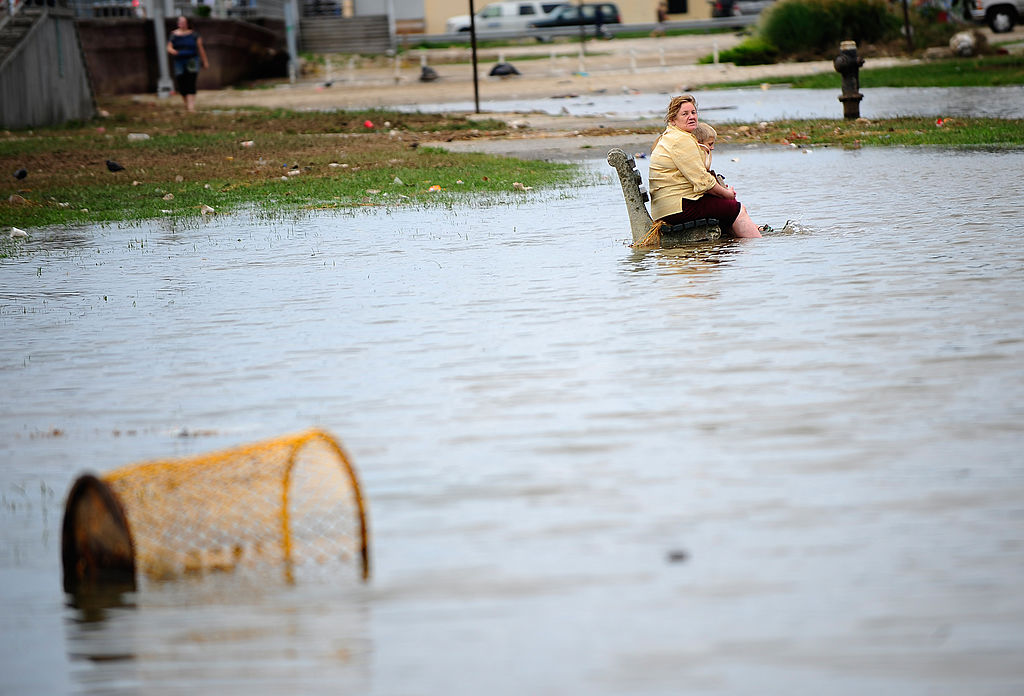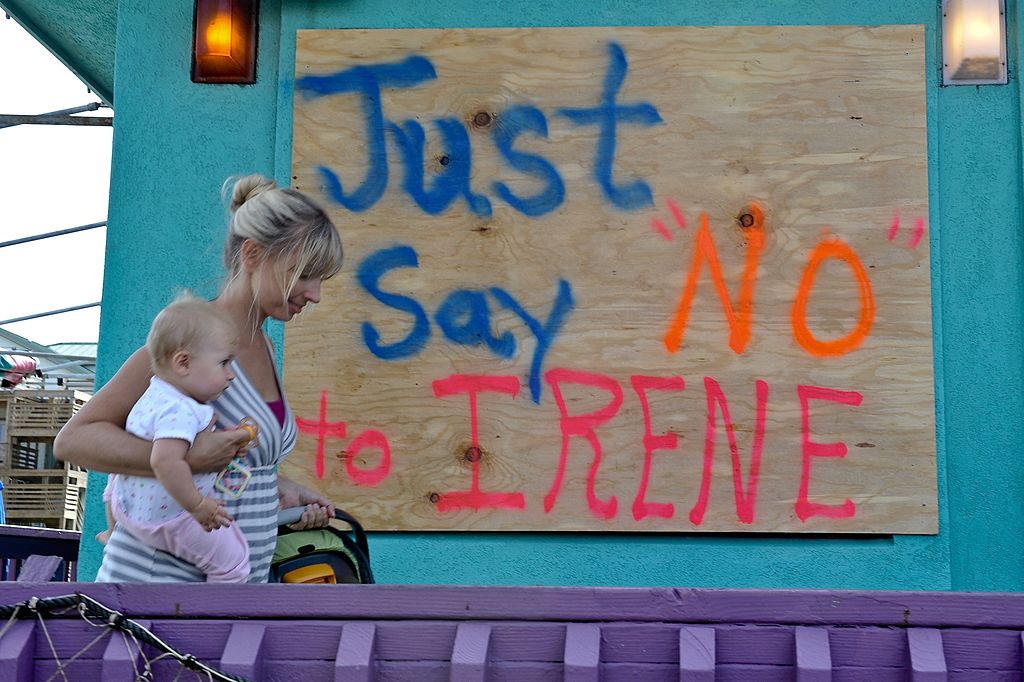Hurricane Irene 10 years later: What happened and what’s changed

A tow truck driver hooks up an abandoned car that rests in the flooding near Mill Steam Park in Centreville, MD, August 28, 2011, after Hurricane Irene. AFP PHOTO/Jim WATSON (Photo credit should read JIM WATSON/AFP via Getty Images)
NORTH CAROLINA (NewsNation Now) — As the Mid-South prepares for another potentially devastating hurricane, residents of the East Coast are remembering Hurricane Irene which brought devastating floods, tornados and destruction.
The storm’s legacy has been slightly overshadowed by the even more destructive Hurricane Sandy that hit the Northeast one year later.
But 10 years later, Irene is credited with helping cities and National Oceanic and Atmospheric Administration change the way they prepare for deadly storms. It also signaled a shift in the strength and power of hurricanes as year after year the United States is hit with a season full of deadly storms.
The 2011 hurricane impacted 65 million people in 15 states and the District of Columbia.
At least 40 people lost their lives and it was one of the costliest storms in U.S. history with damage costing an estimated nearly $15.8 billion, according to the National Oceanic and Atmospheric Administration.
The Path of Hurricane Irene
Damage stretched from Florida to Vermont with some towns taking months to rebuild. Connecticut and Massachusetts saw some of the worst flooding. Five tornados hit different states across the U.S. from the hurricane winds.

The storm first made U.S. landfall as a Category one hurricane in North Carolina where it caused major damage to a major highway along with homes and businesses across the state.
Flood damage occurred throughout Maryland, New Jersey and Pennsylvania. New Jersey alone received three to five feet of storm surge according to NOAA.
While New York City escaped the brunt of flood damage, it still ended up suffering severe power outages and related storm damage.
Some of the most significant damage ended up occurring in Vermont though.
Vermont, which rarely is directly hit by tropical storms or hurricanes, experienced a tropical cyclone at the end of Irene’s path that flooded almost every river and stream in the state.
NOAA reported that it was the second deadliest flood event in that region since 1927 with “nearly 2400 roads, 800 homes and businesses, 300 bridges, and a half dozen railroad tracks destroyed or damaged from the flooding in southern Vermont” alone.

The current Vermont governor, Phil Scott, was the Lieutenant Gov. at the time and witnessed first-hand the devastation left behind by Irene. He paid tribute to the lives and livelihoods lost with a recent visit to one town devastated by the storm.
“This is a somber anniversary as we reflect on the damage done, lost homes, and worst of all, the seven people who died during and in the immediate aftermath of the storm,” Scott said.
He added, “At the same time, we all saw that Irene brought out the best in Vermonters, with countless acts of courage and kindness shown to friends, neighbors, and strangers. What’s more, politics took a back seat to progress and after ten years of hard work, Vermont is stronger than we were before.”
Rebuilding and preparing for the future

In an official report from the National Hurricane Center after Irene, the center called for better tools to track hurricane intensity since their predictions were off. They cited trouble tracking the structural integrity of the storms which makes their intensity difficult to gauge.
Since then, the Hurricane Forecast Improvement Program has advanced technology to more accurately track the paths and intensities of storms as they change.
Smaller towns across the New England area changed their storm preparedness tactics to prevent future severe flooding incidents.
The current town manager of Brandon, Vermont, Dave Atherton, said an overflow culvert built five years after Irene helped to avoid another disaster.

“40 days after we finished the construction of it, we had a flood almost the size of Irene on July 1, 2017 and the culvert saved our town,” Atherton stated.
Hurricane Sandy’s devastating impact a year later along with Irene motivated major cities in the Northeast to rethink their storm preparedness.
Congress passed legislation called the Sandy Recovery Improvement Act which included changes to the way the Federal Emergency Management Agency responds to hurricane disasters and pays for them.
Now as the United States prepares for another hurricane season to begin, the impact of Irene remains strong in the minds of 65 million Americans.
NewsNation affiliate WFFF contributed to this report










